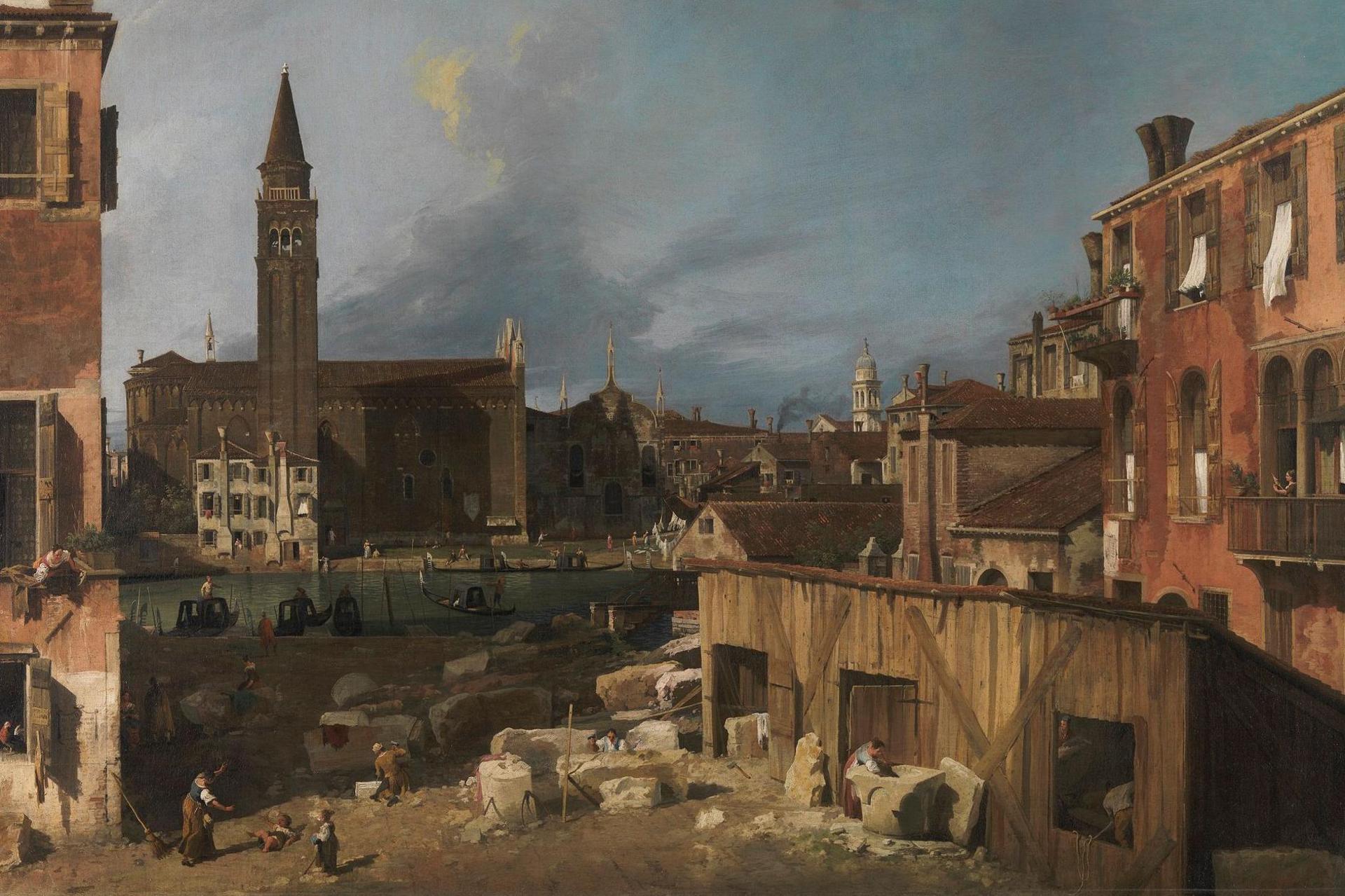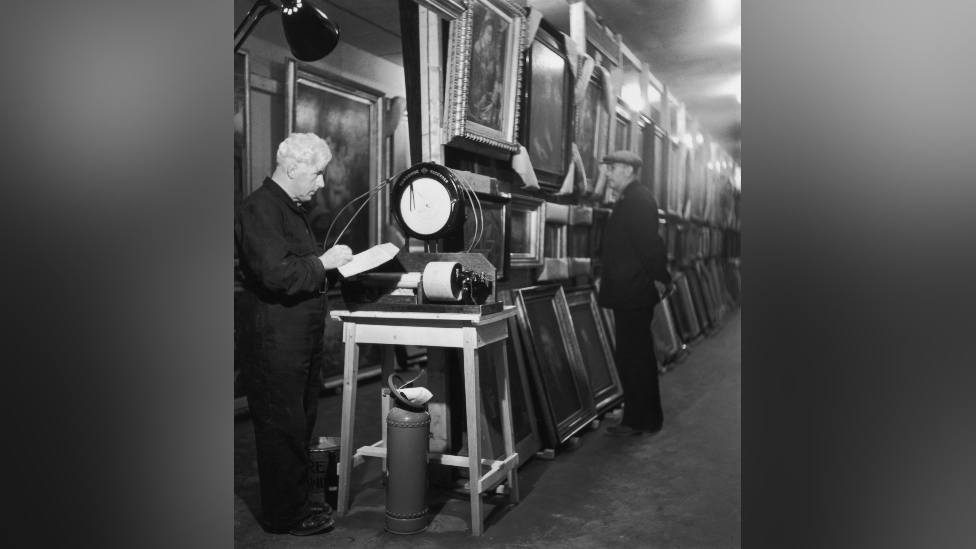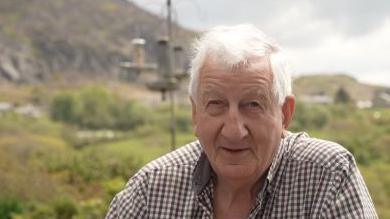Masterpiece hidden in mine in WW2 returns to Wales

The Stonemason’s Yard - painted by Canaletto in about 1725 - has been loaned by the National Gallery in London
- Published
A masterpiece of 18th Century Italian art will go on display in Wales, 80 years after it was last in the country for a very different reason.
The Stonemason’s Yard - painted by Canaletto in about 1725 - has been loaned from the National Gallery in London.
It will be the main attraction of the new Idyll and Industry exhibition at the National Library of Wales in Aberystwyth, Ceredigion, from Friday.
It was last in Wales during World War Two when it was one of 2,000 priceless artworks moved from London to a slate mine in Blaenau Ffestiniog to protect them from German bombs.
More than 80 years later it is back and will be on display at the library until September.
The exhibition tells the story of The Stonemason’s Yard and how it came to Wales as a "refugee" from bombing to be safely protected in the cavernous Manod slate mines.
The secret WW2 role of a Welsh quarry. Video, 00:01:16
- Published19 May 2019
How art treasures were hidden from Hitler
- Published19 May 2019
Winston Churchill – prime minister during the war - ordered the National Gallery's collection to be moved away from London and hidden in "caves and cellars".
Brick studios and air conditioning were installed inside the mines to store the National Gallery’s collection which included work by artists such as Titian, Michelangelo and Constable.
Long after the paintings had been returned to London, Glyn Williams and his family from Blaenau Ffestiniog became the owners of the quarry.
In the 1980s, Mr Williams said he had plans to expand the work there but the UK government wanted to keep the warehouses in place and restricted blasting at the quarry in case the warehouses were damaged.

During World War Two paintings were moved from the National Gallery to Manod slate mine for safekeeping
Mr Williams won a court victory to effectively evict the government and expanded quarrying at Manod.
In 1983 he helped produce a booklet to remember the time the priceless works of art were stored in the quarry.
He said transporting some of the paintings proved difficult – a portrait of Charles I on horseback by Van Dyck - was 3.67m (12ft) tall and 2.92m (9ft 7in) wide.
Also, a trench had to be dug under a railway bridge in Llan Ffestiniog as the gap was not big enough for the lorry transporting the artwork.
Mr Williams said: "But they still miscalculated by about two inches, so they had to let all the air out of the tyres to get under the bridge and then pump them up again to go up to the quarry."
He said the paintings were well looked after – experts stayed near the quarry to care for them and a garrison of soldiers guarded them - while air conditioning units kept the air "quite clean and static" to protect them.

Glyn Williams and his family used to own Manod slate mine near Blaenau Ffestiniog
After the war ended, the 2,000 works were returned to their galleries, many to the National Gallery some to Buckingham Palace.
As part of the National Gallery’s 200th anniversary celebrations, 12 masterpieces from its collection are on display across the UK.
The exhibition in Aberystwyth is the only one in Wales and, for the first time at the national library, there will be an audio described tour for some of the items for visitors who are blind or visually-impaired.
Rhodri Llwyd Morgan, chief executive of the National Library of Wales, said it was "an honour to have one of Canaletto's masterpieces here".
Canaletto was born in 1697 and raised in Venice. and was the city's most famous Venetian painter of his day.
The Stonemason’s Yard is one of his early paintings and is different from many of his other work as it depicts a scene of daily life rather than his celebrated views of Venice’s Grand Canal, regattas and festival days.